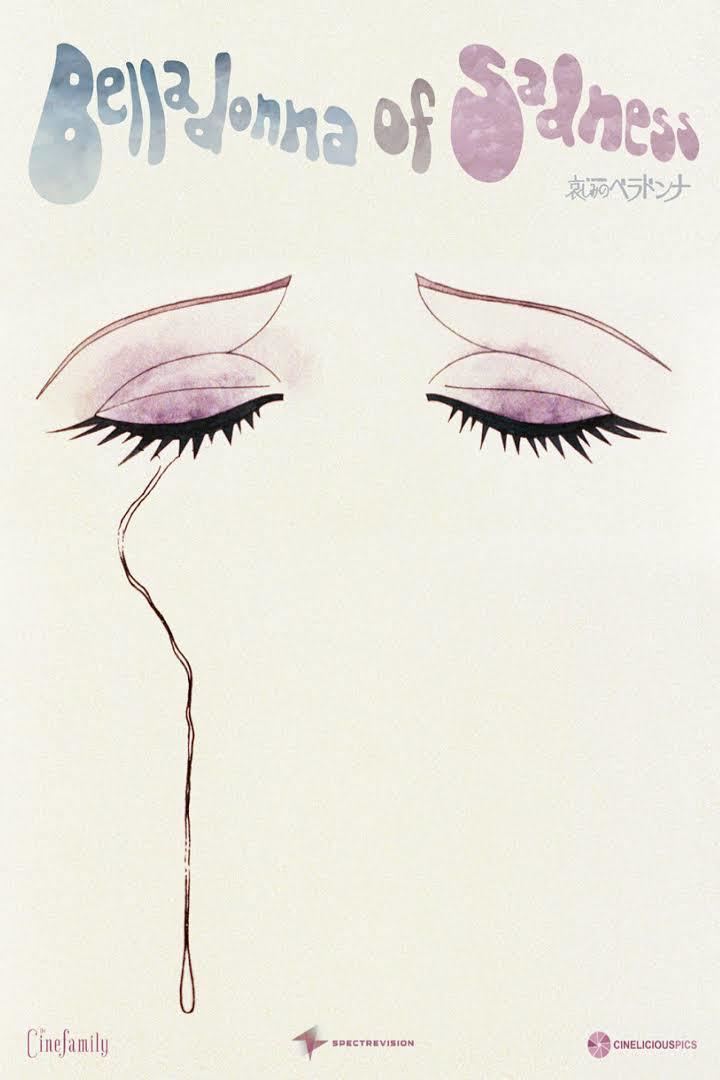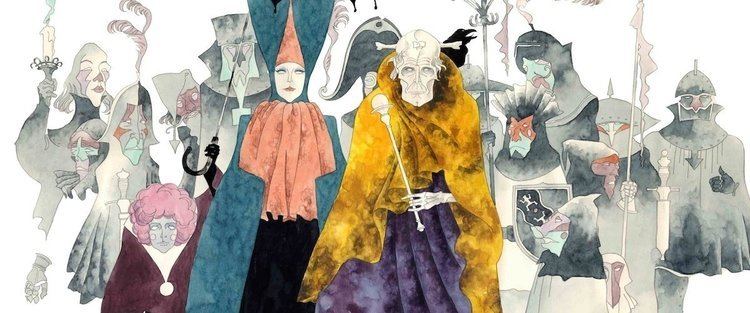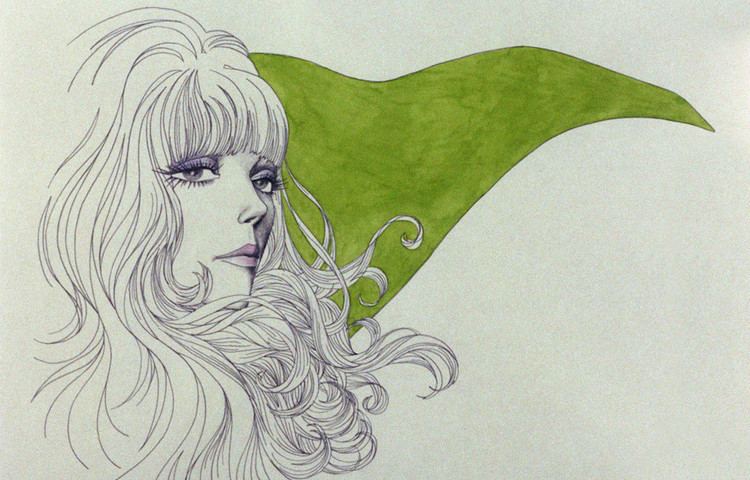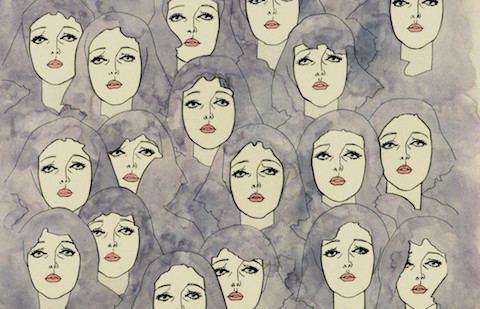7.4 /10 1 Votes
2.5/4 Roger Ebert Japanese 哀しみのベラドンナ Produced by Tadami Watanabe Director Eiichi Yamamoto Story by Jules Michelet | 7.5/10 IMDb 83% Rotten Tomatoes Directed by Eiichi Yamamoto Initial release 30 June 1973 (Japan) Music director Masahiko Sato Film series Animerama | |||||||||||||||||||||||||||||||||
 | ||||||||||||||||||||||||||||||||||
Hepburn Kanashimi no Belladonna Written by Yoshiyuki FukudaEiichi Yamamoto Based on Satanism and Witchcraftby Jules Michelet Cast Tatsuya Nakadai, Aiko Nagayama, Masaya Takahashi, Masakane Yonekura, Katsuyuki Itô Similar Season of the Witch (2011 film), The Trial of Joan of Arc, My Neighbor Totoro | ||||||||||||||||||||||||||||||||||
Trailer for belladonna of sadness 1973
Belladonna of Sadness (哀しみのベラドンナ, Kanashimi no Belladonna), also known as Tragedy of Belladonna, is a 1973 feature film produced by the Japanese animation studio Mushi Production and distributor Nippon Herald Films. It follows the story of Jeanne, a peasant woman who is raped which leads to her being accused of witchcraft, and is notable for its erotic, violent, and psychedelic imagery.
Contents
- Trailer for belladonna of sadness 1973
- Belladonna of sadness official red band trailer
- Plot
- Cast
- Production and release
- References

Belladonna of sadness official red band trailer
Plot

Jeanne and Jean are happy newlyweds in a rural village. Their idyll is promptly shattered when Jeanne, on her wedding night, is raped in a ritual deflowering by the local baron and his lackeys. She returns to Jean terrified and in pain, and he calms her, saying, "Let us forget everything in the past". She begins to see visions of a phallic-headed spirit encouraging her to take revenge on the baron; meanwhile, the couple's fortunes rise even as famine strikes the village and the baron raises taxes to fund his war effort. Jean is made tax collector, and the baron cuts off his hand as punishment when he cannot extract enough money from the village. After another visit from the spirit, Jeanne takes out a large loan from an usurer and sets herself up in the same trade, eventually parlaying it into becoming the true power in the village.

Then the baron returns victorious from his war, and his wife, envious of the respect and admiration accorded Jeanne, calls her a witch and has her driven out. Jeanne first tries to return to the home she shares with Jean, but he refuses to open the door for her and she flees into the forest nearby where she finally makes a pact with the spirit, who reveals himself to be the devil. She is granted considerable magical powers, and uses them to lead a rebellion in the village.
Cast

Production and release

Directed and co-written by Eiichi Yamamoto and inspired by Jules Michelet's non-fiction book Satanism and Witchcraft, it is the third and final film in the Animerama trilogy and the only one to be neither written nor directed by Osamu Tezuka (he left Mushi Production during the film's early stages to concentrate on his comics and his conceptual-stage contribution is uncredited). Belladonna is also of a more serious tone than the more comedic first two Animerama films. Its visuals consist mostly of still paintings panned across and are influenced by western art, such as that of Gustav Klimt, and Tarot illustrations. The film was a commercial failure and contributed to Mushi Pro becoming bankrupt by the end of the year. The film was entered into the 23rd Berlin International Film Festival.

The film was released wide in Europe and Japan, and received a limited screening in the US in 2009 and has undergone a 4K digital restoration for theatrical release in May 2016.
The restoration was screened on July 10, 2015 in a "sneak preview" at Japan Cuts, and then played September 24, 2015 at Fantastic Fest in Austin before a theatrical run beginning May 6, 2016 in New York City and San Francisco.
Because of the film's obscurity, various sources list its running time as anywhere from 86 to 93 minutes. Cinelicious Pics clarified in May 2016 that its 86-minute restoration represented the correct running time, saying that this length had been
cut down by approximately eight minutes for an unsuccessful re-release in Japan in 1979 (with the addition of the brief ending shot of Eugene Delacroix's painting Liberty Leading the People, which wasn’t in the original version—Cinelicious left it in this restored version). Cinelicious restored the censored footage from the sole surviving 35mm release print of the full-length version at the Cinematek in Belgium, which very graciously agreed to do a 4K scan of the missing sections from their print.
